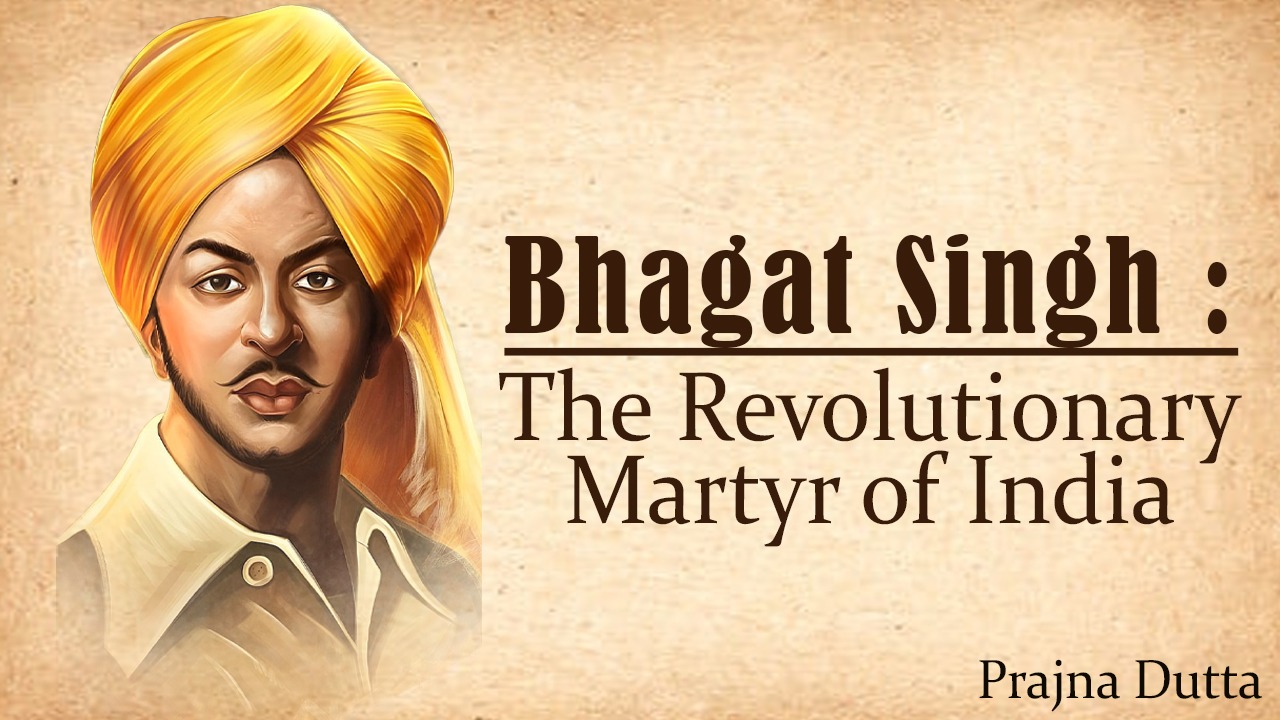Introduction:
Bhagat Singh, often referred to as Shaheed Bhagat Singh, was one of the most influential revolutionaries and freedom fighters in the Indian independence movement. Born on September 28, 1907, in Banga, Punjab, Bhagat Singh's unwavering dedication and sacrifice for the nation have made him an iconic figure and a symbol of bravery and patriotism in India. With his fiery spirit, intellectual acumen, and unwavering commitment to the cause of India's freedom, Bhagat Singh continues to inspire generations of Indians.
Early Life and Education:
Bhagat Singh was born into a patriotic Sikh family that had a history of active participation in the fight against British colonial rule. His father, Kishan Singh, and his uncle, Ajit Singh, were actively involved in the Indian nationalist movement, which significantly influenced Bhagat Singh's upbringing. Bhagat Singh received his early education at D.A.V. School in Lahore, where he was known for his intelligence and leadership qualities. He was deeply influenced by the literary works of Punjabi writers and political leaders like Kartar Singh Sarabha and Lala Lajpat Rai.
Entry into Revolutionary Activities:
The Jallianwala Bagh massacre in 1919, where hundreds of innocent Indians were killed by British troops, left an indelible mark on Bhagat Singh's mind. He became an active participant in the non-cooperation movement led by Mahatma Gandhi, but soon realized that peaceful protests alone would not be sufficient to achieve India's independence. In 1926, he joined the Hindustan Republican Association (HRA), a revolutionary organization that aimed to overthrow British rule by armed struggle.
Role in Revolutionary Activities:
Bhagat Singh, along with his comrades Shivaram Rajguru and Sukhdev Thapar, was involved in several acts of revolutionary violence against the British government. The most notable among these was the throwing of non-lethal bombs in the Central Legislative Assembly in Delhi in 1929. The purpose of this act was to protest against the repressive measures of the British government and to make their voices heard. However, the revolutionaries took care not to cause any harm to innocent people.
Arrest, Trial, and Martyrdom:
The British government launched a massive manhunt to capture Bhagat Singh and his associates after the Assembly bombing. Bhagat Singh went into hiding but was eventually arrested on April 8, 1929. During his imprisonment, Bhagat Singh and his fellow revolutionaries went on a hunger strike to protest against the inhumane treatment of political prisoners. Despite immense public support for their cause, the British authorities callously executed Bhagat Singh, Rajguru, and Sukhdev on March 23, 1931, in Lahore Central Jail.
Legacy and Ideology:
Bhagat Singh's sacrifice and revolutionary ideals continue to resonate with the Indian populace even today. He believed in the power of youth as a catalyst for change and advocated for a socialist society free from exploitation. Bhagat Singh's writings, particularly his prison diary, "Why I am an Atheist," and his revolutionary articles in newspapers like "Kirti," remain powerful and thought-provoking. His ideology emphasized the importance of education, selflessness, and fearlessness in the pursuit of social and political justice.
Impact on the Indian Independence Movement:
Bhagat Singh's actions and sacrifice had a profound impact on the Indian independence movement. His fearless and daring acts inspired a whole generation of young revolutionaries to join the struggle against British rule. The incident of the Assembly bombing brought the issue of India's independence to the forefront and ignited a spirit of rebellion among the masses. Bhagat Singh's courage and determination in the face of adversity galvanized the nation and turned him into a symbol of resistance against colonial oppression.
Martyrdom and Public Outrage:
The execution of Bhagat Singh, Rajguru, and Sukhdev by the British government evoked widespread outrage and grief among the Indian population. Their martyrdom triggered massive protests and strikes across the country. People from all walks of life, including students, workers, and intellectuals, came together to demand justice and freedom. Their sacrifice became a rallying point for the freedom struggle and spurred a renewed sense of unity and determination among Indians.
Inspiration for Future Generations:
Bhagat Singh's ideas, writings, and sacrifice continue to inspire and shape the mindset of future generations. His emphasis on the importance of education, selflessness, and the pursuit of truth resonates strongly with young Indians. Bhagat Singh's revolutionary spirit and commitment to social justice have motivated countless individuals to actively engage in social and political causes. He remains an enduring symbol of courage, patriotism, and the fight against injustice.
Recognition and Commemoration:
The legacy of Bhagat Singh has been honored and commemorated in various ways. He is revered as a national hero and martyr in India. Numerous statues, memorials, and institutions have been established in his honor across the country. The date of his execution, March 23, is observed as Shaheed Diwas (Martyrs' Day) in India to pay tribute to all the freedom fighters who sacrificed their lives for the nation. Bhagat Singh's life and struggle have also been depicted in numerous films, books, and documentaries, further cementing his place in Indian history.
Conclusion:
Bhagat Singh, the revolutionary martyr, remains an iconic figure in India's struggle for independence. His unwavering commitment to the cause of freedom, his intellectual prowess, and his fearlessness in the face of adversity continue to inspire generations. Bhagat Singh's sacrifice, along with that of countless other freedom fighters, played a pivotal role in shaping India's destiny. His legacy serves as a reminder of the power of youth, the importance of standing up against injustice, and the indomitable spirit of the Indian people in their quest for independence.

Comments